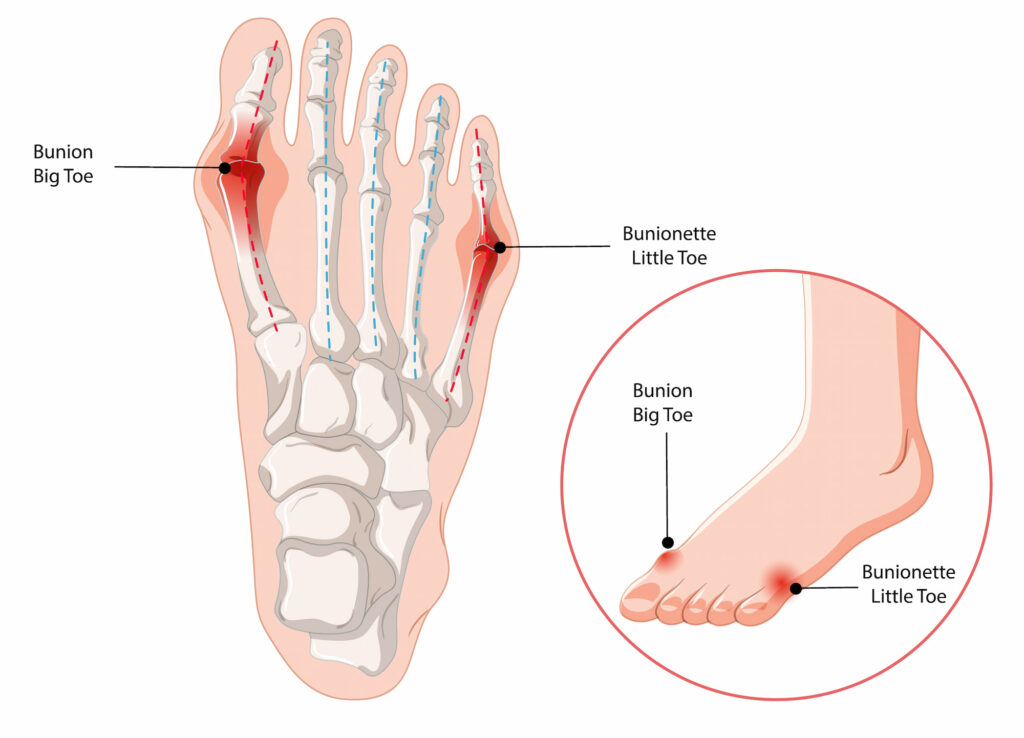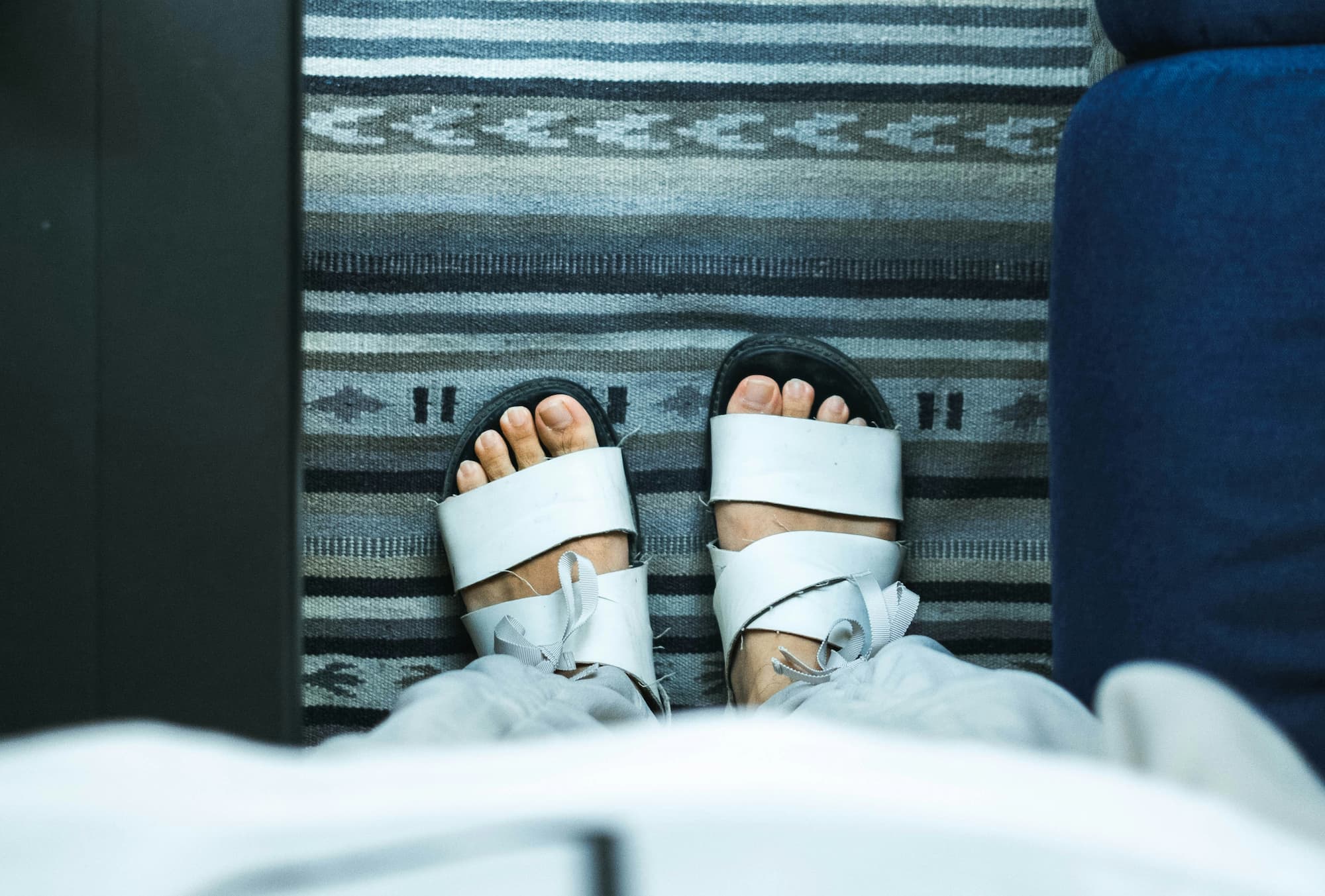What causes bunions?
- Some people are more likely to develop bunions due to the shape or alignment of their feet, often inherited from family.
- Wearing narrow, tight, or high-heeled shoes can force the toes into unnatural positions, potentially contributing to bunion formation.
- Rheumatoid arthritis or other inflammatory joint disorders may lead to or exacerbate bunions.
- Previous injuries or stresses on the foot can also contribute to the misalignment of the toe joints, resulting in bunions.
What symptoms would I notice?
- A prominent, bulging bump at the base of the big toe
- Swelling, redness, or soreness around the joint
- Corns or calluses where the big toe rubs against the second toe
- Persistent or intermittent pain, often worse with certain types of shoes
- Reduced movement of the big toe

How is a bunion diagnosed?
If you think a bunion may be forming and it is interfering with your daily activities, visit your GP to assess the bunion’s severity. An X-ray of the foot is typically taken to examine bone alignment, check for arthritis, and confirm the extent of the deformity. Rarely, a CT scan or MRI may be suggested if further detail is required.
Treatment options
Treatment for bunions starts with lifestyle adjustments and may extend to surgical procedures, depending on severity and symptoms.
Non-operative treatments
For most bunions, non-surgical interventions provide relief and slow progression. Options include:
- Choosing wide-toed shoes with ample space for toes can help reduce pressure on the bunion. Female patients may consider wearing male runners instead to offer more space for the front of the foot and reduce rubbing.
- Protective pads placed over the bunion can help minimize rubbing and discomfort from shoes.
- Splints worn at night to help align the big toe and reduce discomfort.
- Reducing activities that aggravate the bunion can help manage pain.
- Anti-inflammatory injections, along with over-the-counter pain relievers, can temporarily relieve bunion pain.
- Custom shoe inserts may help distribute foot pressure more evenly, reducing strain on the bunion.
Operative treatments
Surgery is generally reserved for severe cases where non-operative treatments have not provided relief or if the pain from the bunion is significantly affecting quality of life. Due to long term swelling after surgery, scarring and the possibility of the condition recurring again surgery is not recommended for purely cosmetic reasons. Surgical options include:
- Bunion correction surgery, in cases without arthritis, during which the bones are realigned to correct the deformity.
- In severe cases or those with arthritis, a joint fusion procedure may be performed to reduce pain and restore stability. This involves permanently joining the bones in the affected joint.
To read more about bunion correction surgery and recovery afterwards see below:
Bunion surgery with Dr Lambers
When non-surgical treatments fail to improve comfort or slow bunion progression, your GP may refer you to Dr Lambers to determine if surgical intervention is appropriate.

